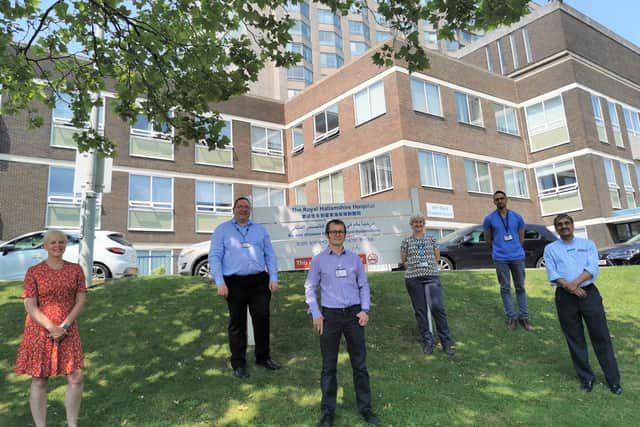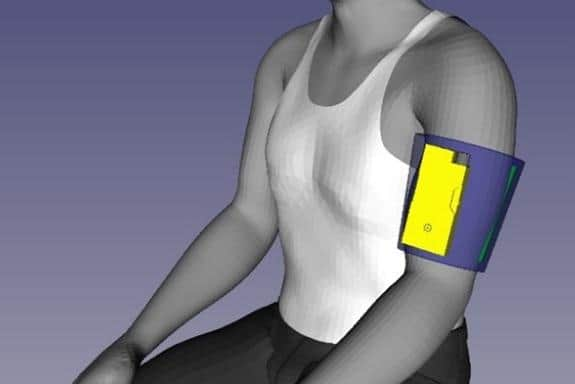Sheffield medics developing 'groundbreaking' treatment that could change stroke victims' lives
and live on Freeview channel 276
Researchers at Sheffield Teaching Hospitals NHS Foundation Trust will be leading the trial to develop a new lightweight wearable device delivering tiny electrical pulses to the arm.
Around a third of stroke survivors experience excessive muscle stiffness affecting an arm - a tiring, painful and disabling consequence of their condition which limits their ability to do usual day-to-day tasks and can lead to permanent rigidity as muscles become resistant to stretching.
Advertisement
Hide AdAdvertisement
Hide AdThe new Sheffield Adaptative Patterned Electrical Stimulation (SHAPES) device, which works like a TENS machine but is far more advanced, is to be built and tested thanks to £1.2m grant award from the National Institute for Health Research’s ‘Invention for Innovation’ programme.


Dr Siva Nair, Consultant Neurologist at Sheffield Teaching Hospitals NHS Foundation Trust and lead for the clinical trial, said: “Our device is a significant technological advancement in the field of therapeutic electrical stimulators.
"Muscle stiffness in the arm is a major barrier to rehabilitation after stroke, so we are really pleased that we have received funding to test this innovative form of treatment. If our study is successful it will lead to a novel therapy for the rehabilitation of muscle stiffness after stroke.
"The technology also has the potential to be useful in the treatment of muscle stiffness in several other diseases of the brain and spinal cord, such as head injury and multiple sclerosis which could offer renewed hope to thousands of patients living with the consequences of debilitating neurological conditions.”


Advertisement
Hide AdAdvertisement
Hide AdThrough a unique combination of electronic design and programming, the SHAPES technology is able to deliver continuous moving patterns of tiny electrical pulses to the arm to multiple areas at any given time.
Previous research suggests that this variability in sensations is important in improving recovery from the muscle stiffness caused by stroke.
The SHAPES technology will be tested on patients, recruited between two to sixteen weeks post-stroke, in a clinical trial later in the year. It is hoped that the technology will improve rehabilitative outcomes for stroke patients at an optimal point in their recovery and will be cost-effective for the NHS to use.
Professor Adewale O Adebajo, 63, who lives in Whirlow and suffered with a life-threatening bleed on his brain in 2015 while working at Barnsley Hospital, said the new technology was important in addressing an unmet need in stroke survivors.
Advertisement
Hide AdAdvertisement
Hide Ad“Excessive muscle stiffness in an arm is a really unpleasant and painful consequence of having a stroke,” he said.
“I was mainly wheelchair dependent following my stroke and I suffered a lot of weakness in my left side, but one of the things I wanted to do during my recovery was to use my left arm.
“I love playing table tennis, but I couldn’t do that, and when I would lift my arm up and let it go it was just like dead wood. It was very unpleasant. In my opinion Sheffield is a world leader in stroke research, so this new technology, if successful, could really help in reducing pain and symptoms and in restoring arm function.”
Comment Guidelines
National World encourages reader discussion on our stories. User feedback, insights and back-and-forth exchanges add a rich layer of context to reporting. Please review our Community Guidelines before commenting.